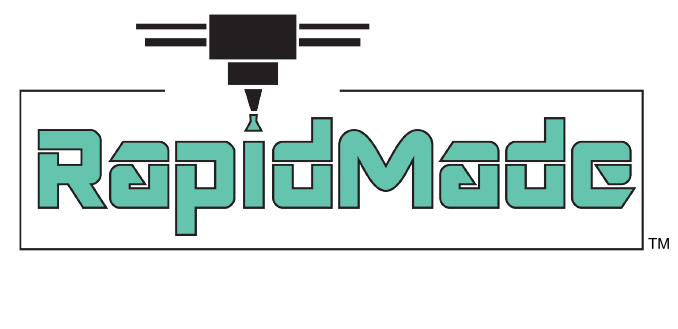3D Printing and Additive Manufacturing In Brief
Understanding 3D Printing
The terms 3D printing and additive manufacturing are generally used interchangeably. They refer to a group of new technologies and processes that allow parts, models and (in some cases) assemblies to be built from nothing.
Additive manufacturing is often best explained by how it differs from traditional types of production. For example:
Metal machining is a common and proven form of manufacturing: you start with a block of metal and cut away all of the parts that are unnecessary. Additive manufacturing, on the other hand, builds up only what is needed.
Injection molding requires the creation of a mold, usually machined from a large block of aluminum or steel. Molten plastic is then injected into the mold to form parts. This kind of tooling is expensive and time consuming to produce. In contrast, additive manufacturing requires little-to-no upfront setup or tooling costs. Furthermore, it's now possible to 3D print injection mold tooling!
In contrast, 3D printing works by slicing an object into thin layers, sometimes as thin as 16 microns (0.0006in), and building each layer in succession. This unique manner of creating things allows for new design opportunities and geometries. For instance:
Parts can now be made with complex internal structures that cut out weight while maintaining structural integrity.
Many design constraints (like requiring draft and eliminating undercuts) that limit other processes are obsolete.
Original masters for traditional casting processes can be produced easily and quickly.
Below is a brief glossary of terms that will help you navigate the world of additive manufacturing:
Common Acronyms
FDM: Fused deposition modeling (trademarked by Stratsys), also known as fused filament fabrication (FFF). See: material extrusion, thermoplastic.
SLS: Selective laser sintering. See: powder bed fusion.
DMLS: Direct metal laser sintering. See: powder bed fusion.
SLA: Stereolithography apparatus. See: vat photopolymerization.
Types of Additive Manufacturing
Vat Photopolymerization: A process which builds parts by using light to selectively cure a vat of photopolymer. Stereolithography is the classic example of this type of process.
Material Jetting: A process which builds parts by depositing small droplets of photopolymer (similar to an inkjet printer). These layers are then cured by exposure to light. See Multi Jet and PolyJet use for examples of this process type.
Binder Jetting: A process which creates objects by squirting a binding agent into a powdered material. See ColorJet and Metal Printing for examples of this process type.
Material Extrusion: A process which creates objects by extruding a thin strand of thermoplastic to build layers. It is often likened to a tube of toothpaste or a syringe. See Fused Deposition Modeling.
Powder Bed Fusion: A process which melts fine layers of powdered plastic or metal into solid objects using a laser. See Selective Laser Sintering and Direct Metal Laser Sintering.
Sheet Lamination: A process which builds parts by cutting sheet of material and binding them together in layers.
Directed Energy Deposition: In this process, parts are built or repaired by using focused thermal energy to fuse materials as they are deposited.
Engineering Terms
Thermoplastic: A plastic that softens when heated and solidifies when cooled.
Photopolymer: A liquid plastic that hardens permanently when exposed to light.
